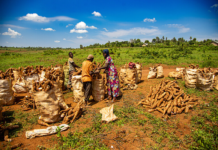By Eric Kimunguyi, CEO, Agrochemicals Association of Kenya
The modern world is built on chemicals, be it medicines we apply, or cleaning fluids, crop protection products, or the raw materials for everything from laptops and mobile phones to clothes and furniture. Across all, we have created an entire modern society with chemicals, and, as a result, constantly stretched the size of the world population we can feed, clothe and shelter.
Yet, balancing all the gains from the modern chemistry around us against any negative environmental and human impact has been a rising concern, making for ever greater focus on testing and on risk assessment.
However, not all positions are about weighing the costs and benefits, or striking a balance. Sometimes issues become clouded by emotions, or populism, maybe they become a rallying call for campaigners drumming up membership drives or funding, or they can just become what some people call ‘politically correct’, where opinions shift with or without reason, and it just becomes rebellious to hold any other view or make any other case.
This has seen divergence in the way we have treated approvals in our chemical world, and particularly in relation to the crop protection products we use in Kenya to cull locusts or manage the Fall Army Worm.
As it is, for all chemicals, the regulatory starting point has long been what is called risk assessment.
This risk-based approach assesses the possibility of a substance causing harm to human health and the environment when it is used for the purpose proposed.
In fact, it can be better to take examples we are all familiar with in order to understand the nature of the differing regulatory regimes: an obvious one is household bleach. Bleach can kill you nastily if you drink it. If you put your hand into it or splash it onto your skin or into your eyes, it will burn. Pour it into soils and it kills all the vital soil bacteria. Yet we use it constantly.
That’s because it comes with warnings, and when used with water and protection for our skin, it protects us from literally millions of germs and pathogens that would have ended many of our lives already.
So, risk assessment would look at whether bleach will hurt or kill us when it’s used as it should be, with gloves on and diluted. And if it doesn’t harm us then it can be approved for home use, but with clear markings on it that it is a ‘hazard’ and packaging that young children cannot open.
In fact, until 2009, every regulatory regime in the world used risk assessments to decide which pesticides to approve, which household cleaning products to approve, and which foods to approve (for example, cassava is lethal when undercooked, but is still approved as a human food).
To carry out the risk assessments on crop protection products require comprehensive studies that can take six to nine years of testing, looking at what happens if the product gets in your eyes, is breathed in as fumes, or touches your skin, and examining with animal testing its impact on the nervous system, in creating cancerous cells, in affecting the reproductive or any other biological system or function. The tests span every conceivable environmental impact too.
These tests typically cost around Sh23bn to complete for any one chemical, and the product will only be approved if it is safe for the use proposed, without damaging either humans or the environment. Pesticide approvals, thus, do not come from nowhere, they take years to secure and require proof that one chemical company once summarized as the equivalent of 50-man years of work and five lorry loads of test results, if printed out.
However, in 2009, the European Union decided to take a different approach – not to food, or any other chemicals, but just with pesticides – and moved to what is called hazard assessment.
This regime simply determines whether a chemical has any capacity to cause human or environmental harm in any way. Back to bleach – it’s a hazard. So, if it was a pesticide for the EU, no testing would happen, it cannot under any circumstances get approval for any use (and nor could cassava under a hazard assessment, nor salt, nor sugar).
Now Europe’s move has been deeply controversial, but every nation and region has its politics.
However, the nasty part, in Kenya, is that because the EU changed its rules, some petitioners and NGOs have told the Kenyan parliament and public that Europe banned our approved pesticides because they caused cancer or other harm, when used as pesticides.
That’s just not true. Yet people have even worried about culling locusts that will otherwise move our peoples into starvation because air-spraying must be dangerous, despite the Food and Agricultural Organisation (FAO) recommending it.
Whereas, in fact, all of these pesticides remain in use in the US, Australia and all those regimes that measure them for their safety in use. They have not been ‘banned’ because they harm human health as pesticides. They have been removed, by Europe alone, from all testing to even assess their safety as pesticides, because they can cause harm in other ways.
Which is a very dubious reason for letting the locust multiply. For, of course, Europe doesn’t have locusts, or Fall Army Worm, or food insecurity, so no one is starving to death there over its change of regime. But in Kenya, people will die. So we can ban pesticides with nine years of testing proof they are safe for use. But let’s be aware they are still safe for use, just as they always were, and thousands of people will die as our crops disappear.








